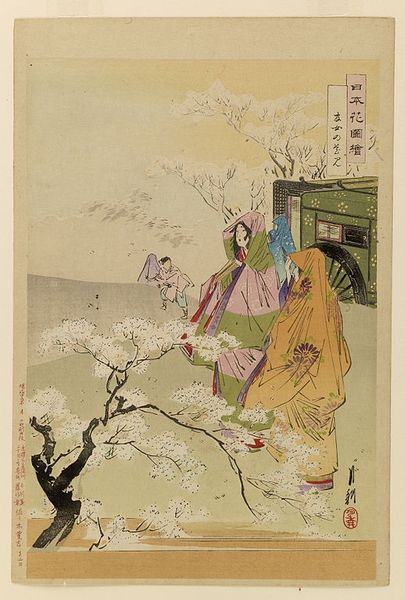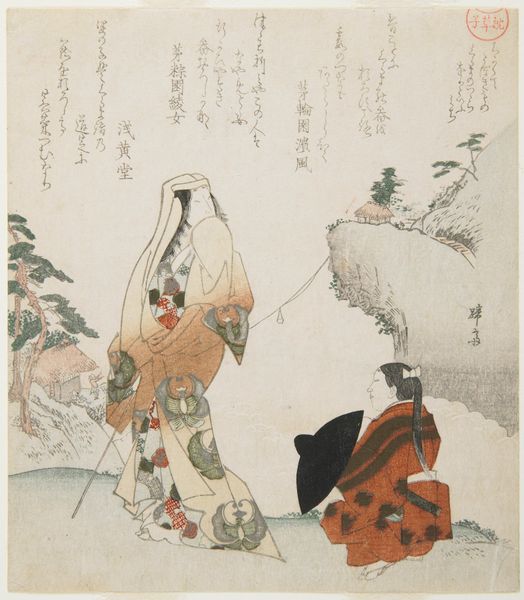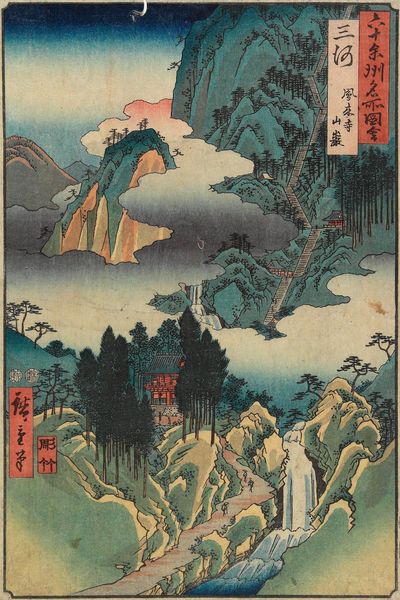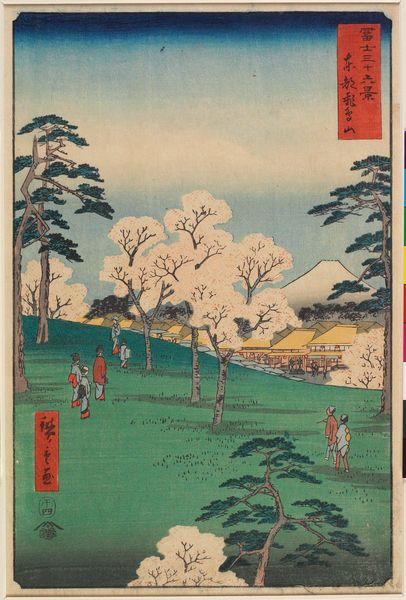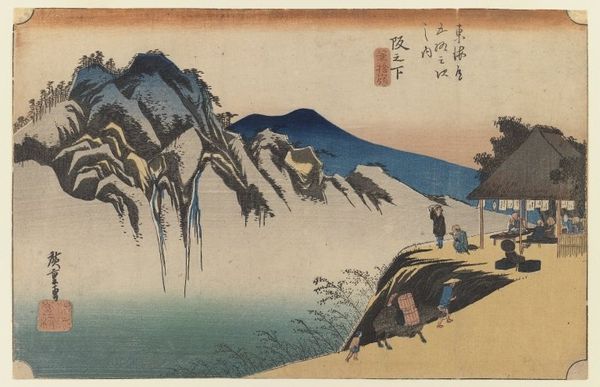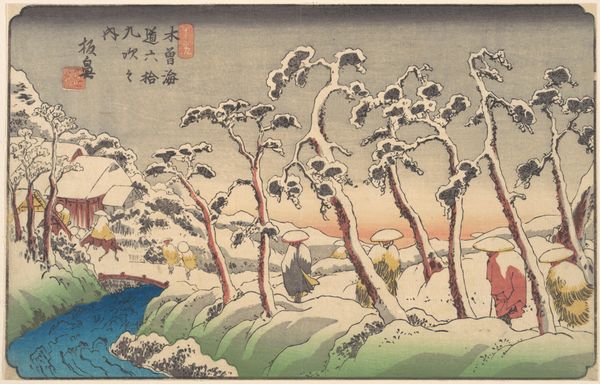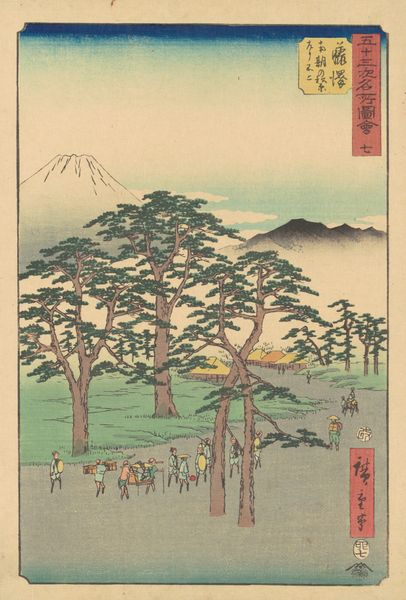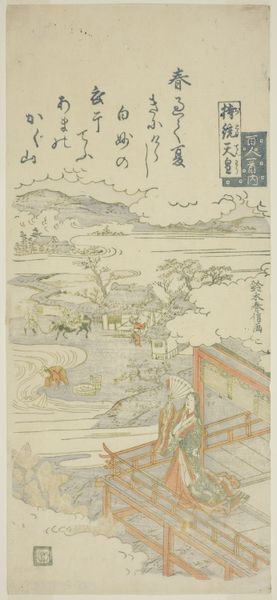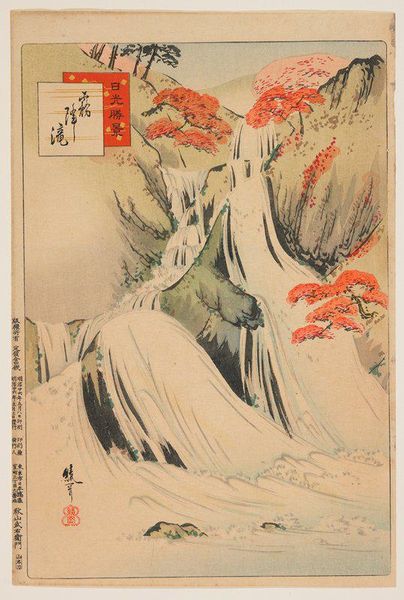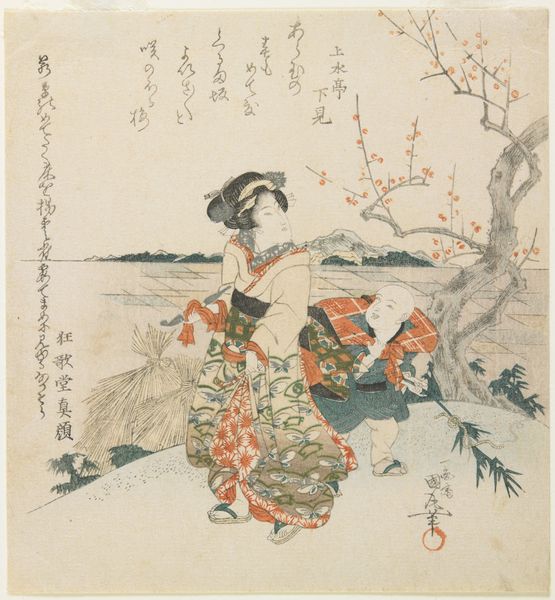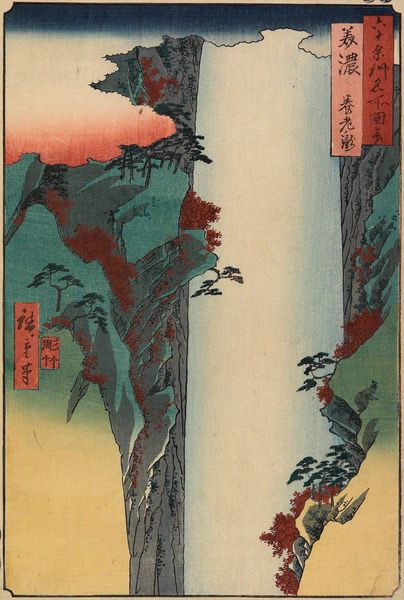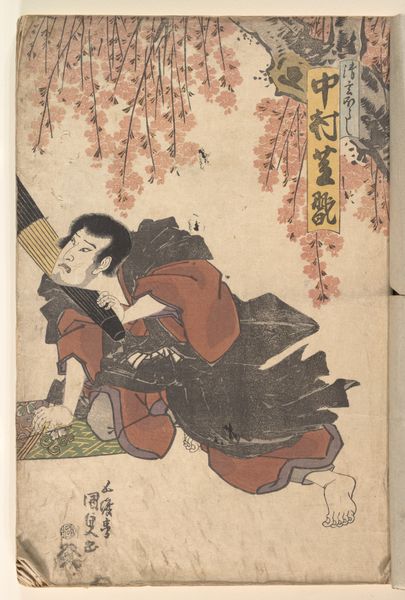
#
landscape illustration sketch
#
toned paper
#
water colours
#
handmade artwork painting
#
personal sketchbook
#
watercolour bleed
#
watercolour illustration
#
cartoon carciture
#
sketchbook art
#
watercolor
Copyright: Public domain
Ogata Gekko created this woodblock print, Nihon hana zue, in Japan during the Meiji era. It depicts figures in traditional robes admiring cherry blossoms. The print participates in the enduring Japanese tradition of appreciating nature, particularly the fleeting beauty of flowers. In this image, the cherry blossom is not simply a natural wonder. It's a cultural symbol loaded with meaning. The cherry blossom season is brief, and the flowers are therefore associated with the transient nature of life, a key concept in Buddhist philosophy. Looking at the date this print was made, it's impossible not to see the way that Japanese identity was being constructed, and reconstructed, at this time. The Meiji Restoration had only recently overthrown the feudal system. Japan was rapidly modernizing and defining itself in relation to the West. Prints such as this presented idealized scenes of Japanese culture, possibly as a reminder of what was being lost even as the country modernized. To understand this work better, we might look to period guidebooks or consult diaries, letters, and newspaper articles to understand the popular representation of Japanese identity in the Meiji era.
Comments
No comments
Be the first to comment and join the conversation on the ultimate creative platform.
